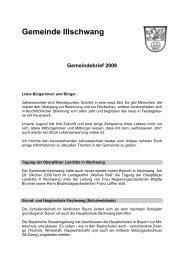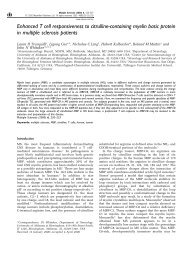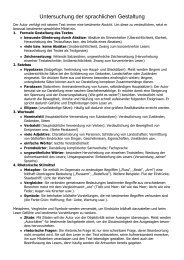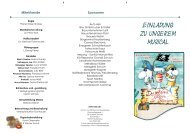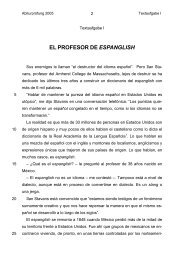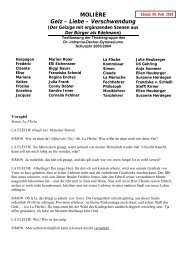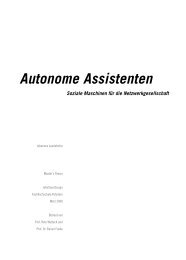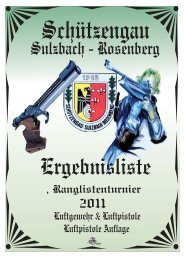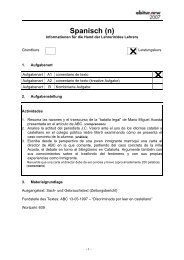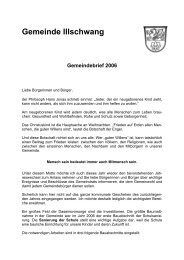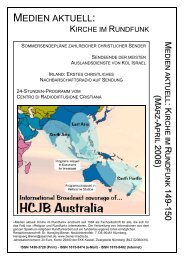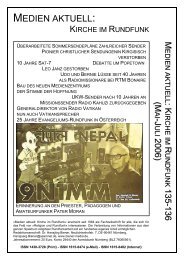Pathfinder Chronicles - Gazetteer - Asamnet
Pathfinder Chronicles - Gazetteer - Asamnet
Pathfinder Chronicles - Gazetteer - Asamnet
Create successful ePaper yourself
Turn your PDF publications into a flip-book with our unique Google optimized e-Paper software.
swallowed by jungle still depict script from ancient times<br />
thought to be related to the lost ancestor language.<br />
Shadowtongue: As a willing vassal of diabolical<br />
Cheliax, secluded, shade-haunted Nidal enjoys all the<br />
benefits of cooperation with the most powerful human<br />
kingdom of western Avistan without the usual oppression<br />
and exploitation common in the empire’s other holdings.<br />
The nation’s unusual cultural and religious traditions<br />
mesh well with the ascendant wickedness of Cheliax<br />
and remain protected from outside inf luence. Foremost<br />
among these traditions is the secret language known as<br />
the Shadowtongue.<br />
Thought to have been handed down from the Midnight<br />
Lord Zon-Kuthon to the people of Nidal during the<br />
lightless terror of the Age of Darkness, Shadowtongue<br />
is a soft, sibilant language in which many syllables are<br />
pronounced with a delicate intake of breath. The overall<br />
impression is of a whispered tongue that sounds to most<br />
ears as if it is being spoken backwards. The reclusive<br />
winged folk of the Devil’s Perch call the Shadowtongue<br />
Whisprin, and claim that the language itself stands at the<br />
root of Nidal’s legendary cultural malignance.<br />
Skald: The lore of the Linnorm Kingdoms suggests<br />
that Skald came to the people of the northland by way<br />
of dwarves in the Age of Destiny. The lyrical, somber<br />
language shares several characteristics with Dwarven,<br />
including a complete runic alphabet. The language is<br />
not Dwarven (thanks to thousands of years of subsequent<br />
development), but a Skald speaker can communicate with<br />
a Dwarven speaker with some difficulty.<br />
Thassilonian: The ancient human Empire of<br />
Thassilon f lourished in the era of Old Azlant and<br />
perished in the same great catastrophe. The monolithic<br />
stonework of the dead empire lingers still in northwest<br />
Vudrani<br />
East of Taldor, east even of the Kelesh deserts and the legendary Pit of<br />
Gormuz, lies the sprawling Kingdom of Vudra, an earthly paradise of<br />
immense temples and infinite wisdom. A power of undeniable inf luence,<br />
Vudra is nonetheless a great distance from the Inner Sea. In western<br />
Avistan, the dark-skinned, exotic Vudrani are oddities to be gawked<br />
and marveled at, legends to those not inured to the wonders of the<br />
worldly markets of Katapesh or Absalom. The Vudrani recognize<br />
the importance of both nations with territorial holdings on the<br />
Isle of Jalmeray. Agents of the island colony often go on diplomatic<br />
missions throughout the region, but they are trusted in few courts<br />
outside Absalom.<br />
The Vudrani worship a bewildering array of thousands of unusual gods,<br />
a religious system little understood outside their homeland. They garb<br />
themselves in luxurious garments of the finest cloth, favoring loose-fitting<br />
clothing appropriate to the warm clime of their homeland. Their culture places great<br />
value on beautiful, deliberate movement and the ability to spin a good story. They<br />
speak Vudrani.<br />
<strong>Gazetteer</strong>: Characters<br />
Avistan, from the massive Storval Plateau and the<br />
southern cities of Varisia to the treacherous mountains<br />
of Belkzen to the edge of the Lands of the Linnorm<br />
Kings. The enigmatic runelike script is based upon<br />
magical symbols important to the Runelord dictators<br />
of ancient Thassilon and is little understood by those<br />
outside academia. Still, Thassilon’s grasp was extensive<br />
in ancient times, and its language survived long after<br />
the fall of its mighty runelords.<br />
Tien: The “common” tongue of Tian Xia is an<br />
amalgamation of words from a dozen languages spoken<br />
in the ancient empires and border kingdoms of the other<br />
side of the world. Tonal differences play an important<br />
role in Tien, so that two words might sound the same to<br />
outsiders but have vastly different meanings depending<br />
upon pitch and tone. True to the rigid, complex societies<br />
of Tian Xia, Tien boasts a wide array of words connoting<br />
politeness and courtly procedure. Seldom heard in<br />
Avistan or Garund, Tien is spoken occasionally in<br />
Absalom, Katapesh, and the northern nations bordering<br />
the Crown of the World.<br />
Varisian: The rolling, sultry tongue of Varisia’s natives<br />
can be heard throughout Avistan, making it a common<br />
“middle ground” language between strangers in the River<br />
Kingdoms and barbarian lands of the north. Its written<br />
form shares the alphabet used by Taldane.<br />
Vudrani: On the border of the Far East stands the<br />
great Kingdom of Vudra, a near mythical place of<br />
wonders and untold riches. Its lilting, birdlike language<br />
is common throughout interior Casmaron, but is<br />
quite rare in the Inner Sea region except perhaps in the<br />
markets of Absalom and Katapesh, and of course the<br />
Vudrani colony on the<br />
Isle of Jalmeray.<br />
1<br />
17



